Why Your Towels Feel Like Sandpaper (And How to Fix It for Under $5)
I’ve handled more towels than I can count. From those perfect, fluffy stacks in fancy hotels to the endless mountains of laundry at big facilities, I’ve seen what works and what absolutely destroys a good towel. I’ve also got my own at home, the ones the family uses daily, and I know that feeling all too well: you bring home a new set of towels, all plush and thirsty, and a few months later they feel stiff, scratchy, and seem to just push water around.
In this article
So many of us think the answer is to dump in more detergent or a glug of fabric softener. But honestly, that’s usually the worst thing you can do. The real secret to restoring your towels is actually simpler than you think. It’s not about some magic formula; it’s about understanding what a towel needs and getting out of its way. I remember one time, a hotel manager was ready to throw out a whole shipment of brand-new towels because they felt like cardboard right out of the box. I ran them through one simple restoration process, and it saved them thousands. You can do the exact same thing at home.
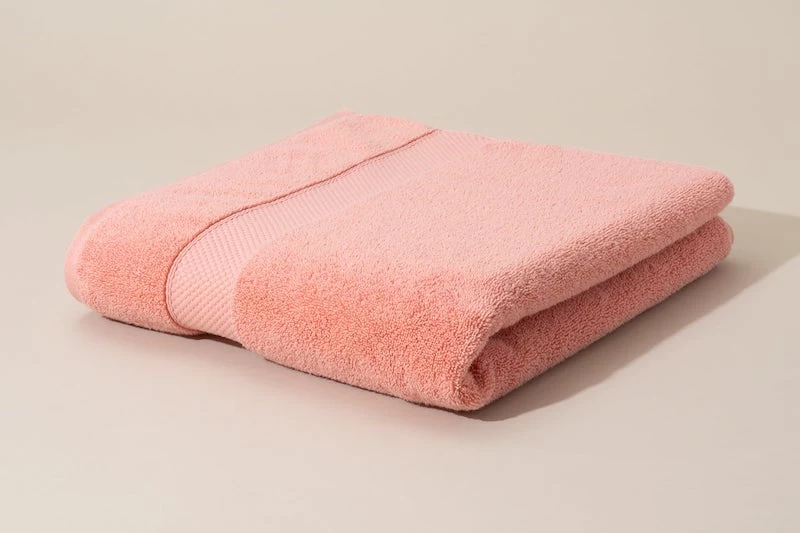
First, What Makes a Towel… a Towel?
Before we get to washing, let’s quickly talk about what we’re working with. A towel’s only job is to soak up water, and it does this with a special fabric called terry cloth. Just picture a field of thousands of tiny, absorbent loops. Those loops create a massive amount of surface area, and that’s what lets a towel hold so much water.
The quality of that field of loops is often measured in GSM, or grams per square meter—kind of like thread count for sheets. A higher GSM number means the fabric is denser, heavier, and way more absorbent. For a little context, a thin, quick-drying gym towel might be in the 300-400 GSM range. A solid, everyday bath towel that balances softness and drying time is usually between 400-600 GSM. And those super heavy, luxurious spa towels? They’re often in the 600-900 GSM range. They feel incredible but can take forever to dry.
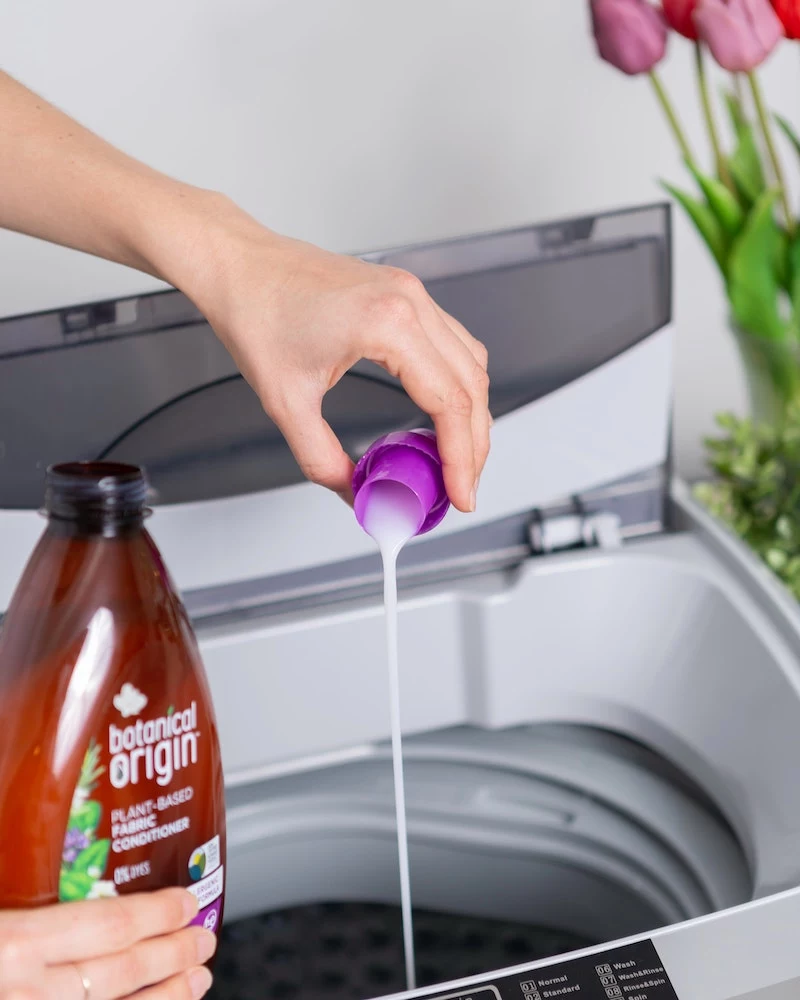
The problem starts when we accidentally clog up all those wonderful loops. The biggest culprits are leftover detergent and fabric softener. They build up over time, creating a waxy film that literally waterproofs the fibers. Hard water minerals can also latch on, making the fibers stiff and brittle. It’s a recipe for a scratchy, useless towel that smells a bit musty.
The Towel Rescue Mission: Stripping Them Back to New
If your towels are already at the stiff and scratchy stage, we need to strip away all that built-up gunk. I use this method to bring towels back from the dead. It’s a rescue process, so you only need to do it every few months or when they start feeling funky—definitely not for every wash.
Heads up: This involves two separate wash cycles, and you won’t use any detergent for either. The whole thing should take about 2-3 hours, depending on your washing machine.
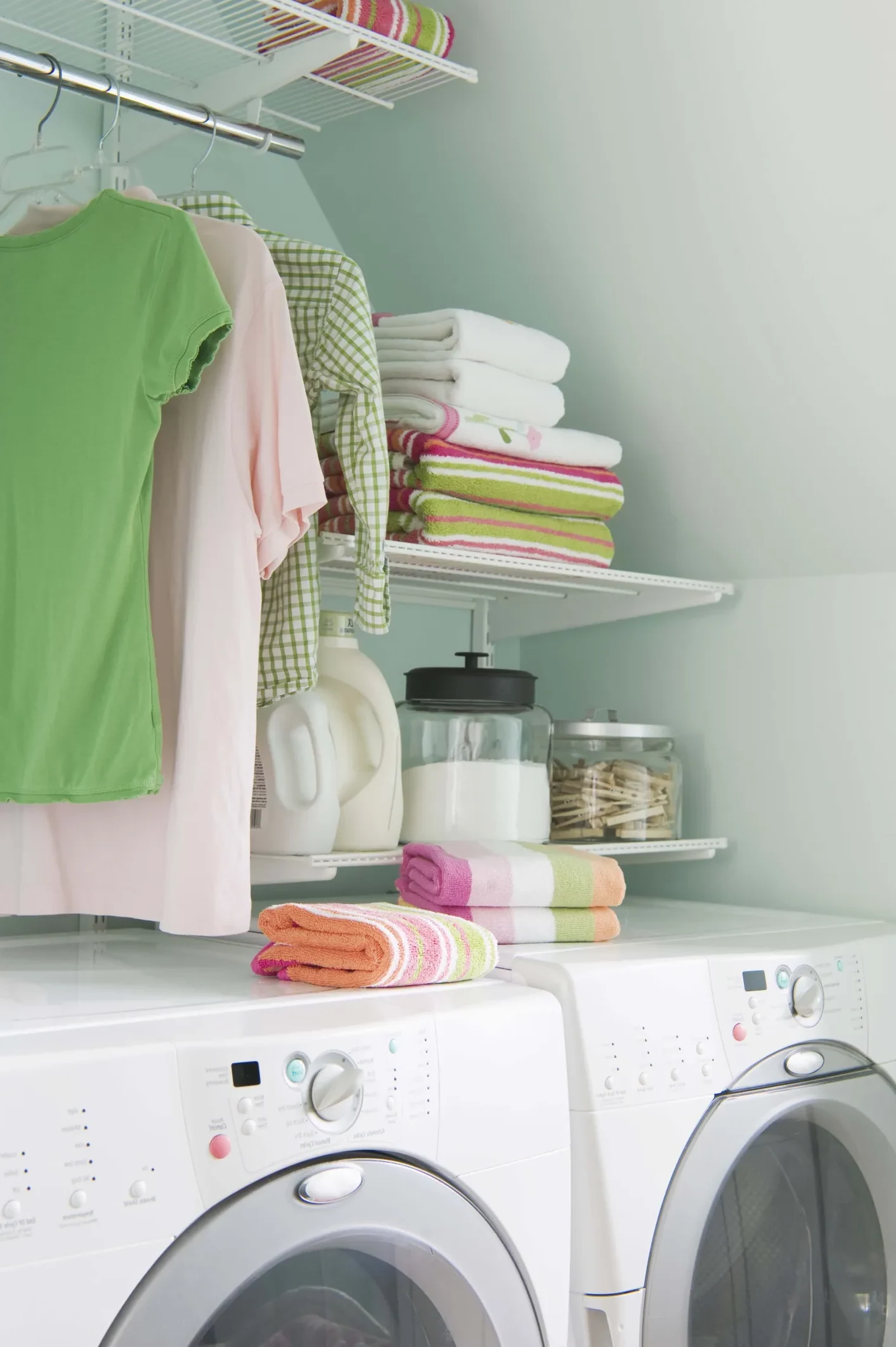
Here’s your shopping list (it’s cheap!):
- Your stiff towels (stick to 4-6 large bath towels per load so they have room to move)
- 1 cup of plain white distilled vinegar
- ½ cup of baking soda
And that’s it. You can get both at any grocery store for under $5.
Step 1: The Vinegar Wash
Load your towels into the washing machine. Pour one cup of white vinegar directly into the drum (or in the fabric softener dispenser is fine, too). Don’t add any detergent! Run a full wash cycle using hot water. The heat helps open up the cotton fibers, and the vinegar gets to work dissolving all the mineral and soap residue.
Step 2: The Baking Soda Wash
Once the first cycle is done, just leave the wet towels in the washer. Now, sprinkle half a cup of baking soda directly over them. And again, no detergent. Run another full wash cycle, also on hot. The baking soda will help scrub away any gunk the vinegar loosened up and, more importantly, it neutralizes any lingering odors (including the vinegar smell). It’s a fantastic deodorizer.
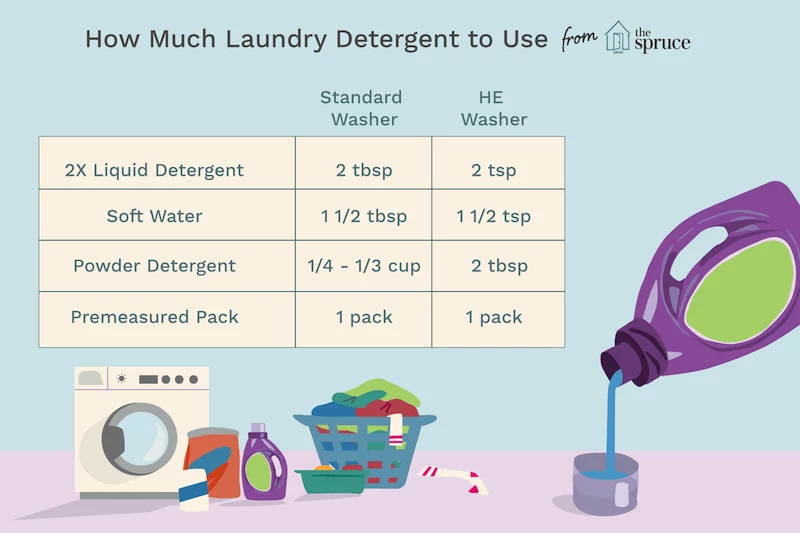
By the way, people always ask if they can just mix the vinegar and baking soda together in one wash. Please don’t! You might remember from that volcano science fair project that mixing an acid (vinegar) and a base (baking soda) just creates a whole lot of fizz. They cancel each other out, and you lose all the cleaning power.
Keeping Them Fluffy: Your New Weekly Routine
Once your towels are restored, keeping them soft is all about proper maintenance. This is the simple routine I swear by.
1. Less is More with Detergent
This is where almost everyone gets it wrong. Use about HALF the amount of detergent recommended on the bottle. Seriously. For a normal load, I use about two tablespoons of liquid detergent. Towel fibers are designed to absorb, and they’ll cling to excess soap, which is what causes the buildup in the first place. I personally like to use simple detergents without a ton of perfumes or dyes, like All Free & Clear or Tide Free & Gentle.

2. Just Say No to Fabric Softener
Liquid fabric softener is the number one enemy of towels. It works by coating fibers in a thin, waxy, water-repellent layer. That might make your t-shirts feel slick, but it completely ruins a towel’s ability to absorb water. If you wash and dry your towels correctly, you won’t need it for softness.
3. Get the Settings Right
Always wash towels in their own load to avoid lint transfer and snagging from zippers. For white or light-colored towels, use hot water to sanitize and deep clean. For colored towels, warm water is best to prevent fading. But the most important button on your machine? The “extra rinse” setting. I use it every single time I wash towels. It’s the best guarantee that all the soap is washed away, leaving the fibers totally clean and thirsty.
Good to know: If you have hard water, that mineral buildup is a constant battle. To keep it at bay, you can add a water-softening booster (like Calgon, which you can find in the laundry aisle) to your regular washes. Or, just run a hot vinegar wash once a month to keep things in check.
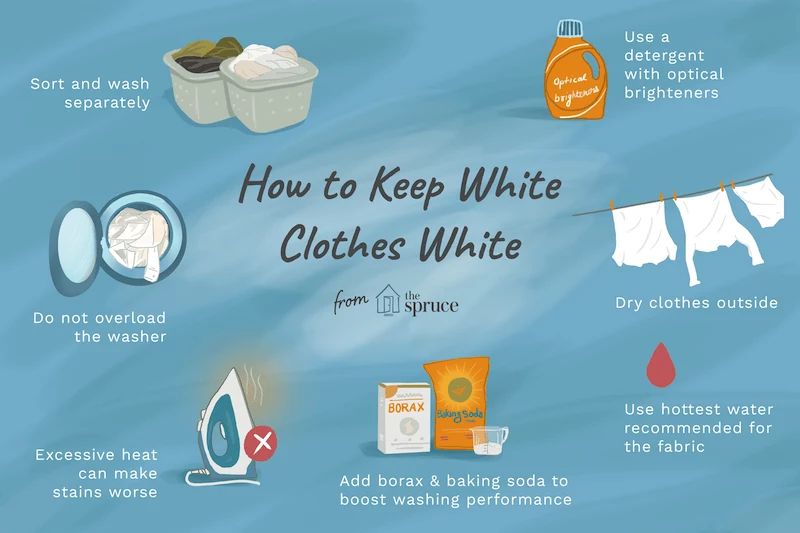
The Art of Drying Without Frying
How you dry your towels is just as important as how you wash them. The goal is fluffy and dry, not crispy and baked.
First, as you move each towel from the washer to the dryer, give it a good, hard shake. This simple snap helps fluff up the loops and lets the air circulate better, which actually speeds up drying time.
When you start the dryer, use a low or medium heat setting. High heat is brutal on cotton fibers; it basically scorches them over time, leaving them brittle and stiff. It might take a few extra minutes, but your towels will last so much longer. To speed things up and boost softness, toss in a few wool dryer balls. They bounce around, separate the towels, and physically soften the fibers. You can find them on Amazon, at Target, or even on Etsy for around $10-15 a set, and they last forever.
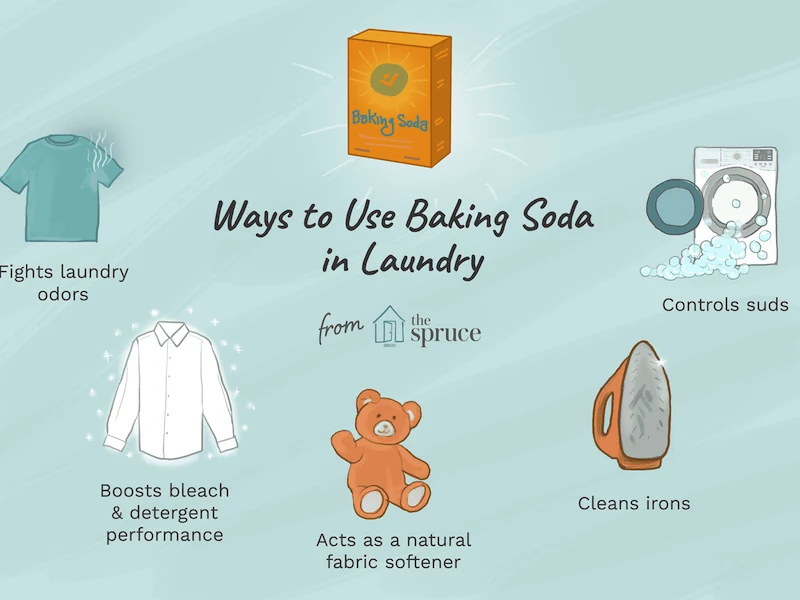
Finally, whatever you do, don’t over-dry your towels. Pull them out as soon as they feel dry, while they’re still warm, not scorching hot. Letting them bake in there is a surefire way to get that stiff, scratchy feeling back.
Okay, That Was a Lot. Here’s the Quick Version.
If you’re just looking for the main takeaways to screenshot, here you go:
The DO List:
- DO use half the recommended amount of detergent.
- DO add an extra rinse cycle to every towel wash.
- DO wash towels separately from your clothes.
- DO dry on low or medium heat with wool dryer balls.
- DO snip a pulled loop with scissors; don’t pull it!
The DON’T List:
- DON’T ever use liquid fabric softener on towels.
- DON’T overload your washing machine.
- DON’T use super high heat in the dryer.
In a Rush? Here’s a Quick Win: If you don’t have time for the full stripping process, just try this on your next load: cut your detergent in half and add an extra rinse. You will be amazed at the difference just those two small changes can make.
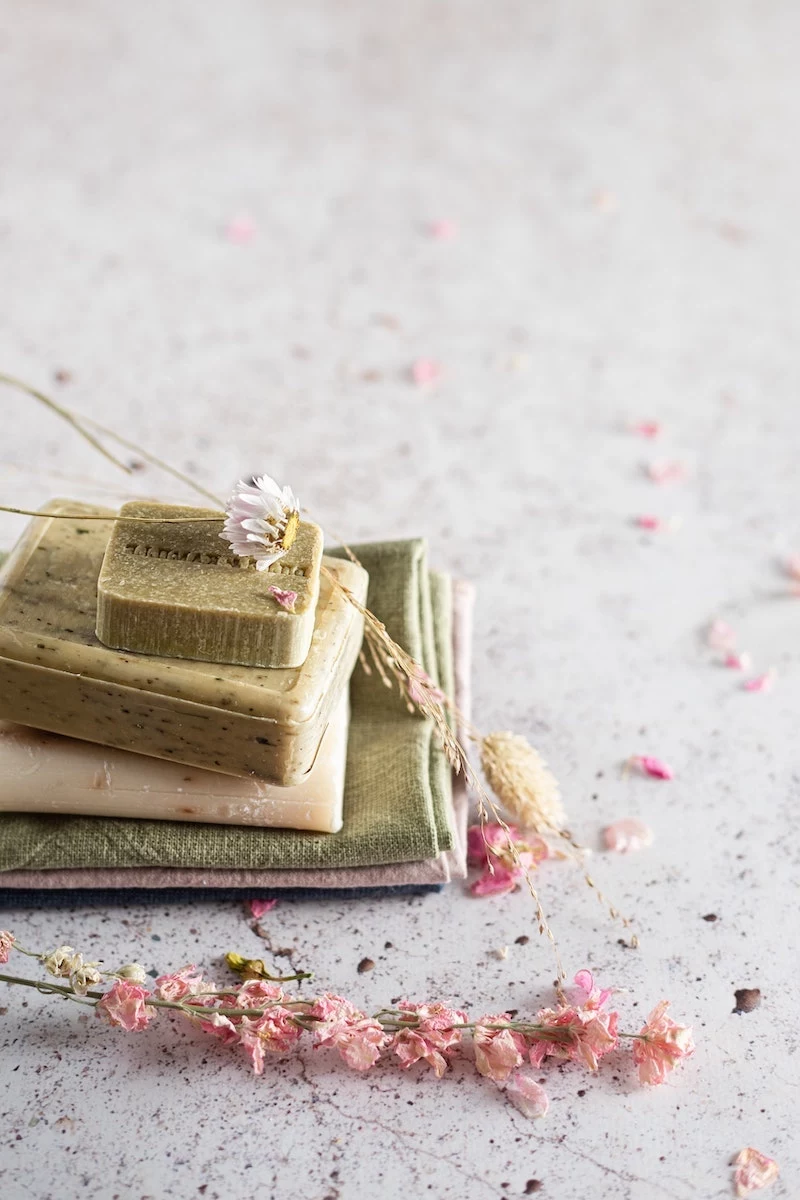
A Word on Different Towel Types
Most of this advice applies to standard cotton towels, which are the most common but also the most prone to buildup. For other materials, here are a few quick tips:
- Premium Cottons (like Egyptian or Pima): These have extra-long fibers, making them super soft and strong. Treat them gently. Lower heat in both the washer and dryer will help protect those long, luxurious fibers and make your investment last.
- Bamboo-Based Rayon: Known for being incredibly silky, bamboo-based towels are also more delicate. Wash them on a gentle cycle to prevent snagging and always use low heat.
- Microfiber: This stuff is synthetic and acts like a lint magnet. A huge pro tip: NEVER wash microfiber with cotton. You will spend the rest of your life picking lint off it. No fabric softener, ever—it will instantly clog the fibers and make them useless.
When It’s Time to Say Goodbye
Even the best towel won’t last forever. Once you see thin patches, frayed edges that won’t stop unraveling, or they just stop absorbing water no matter what you do, it’s time. I demote mine to cleaning rags for the garage.
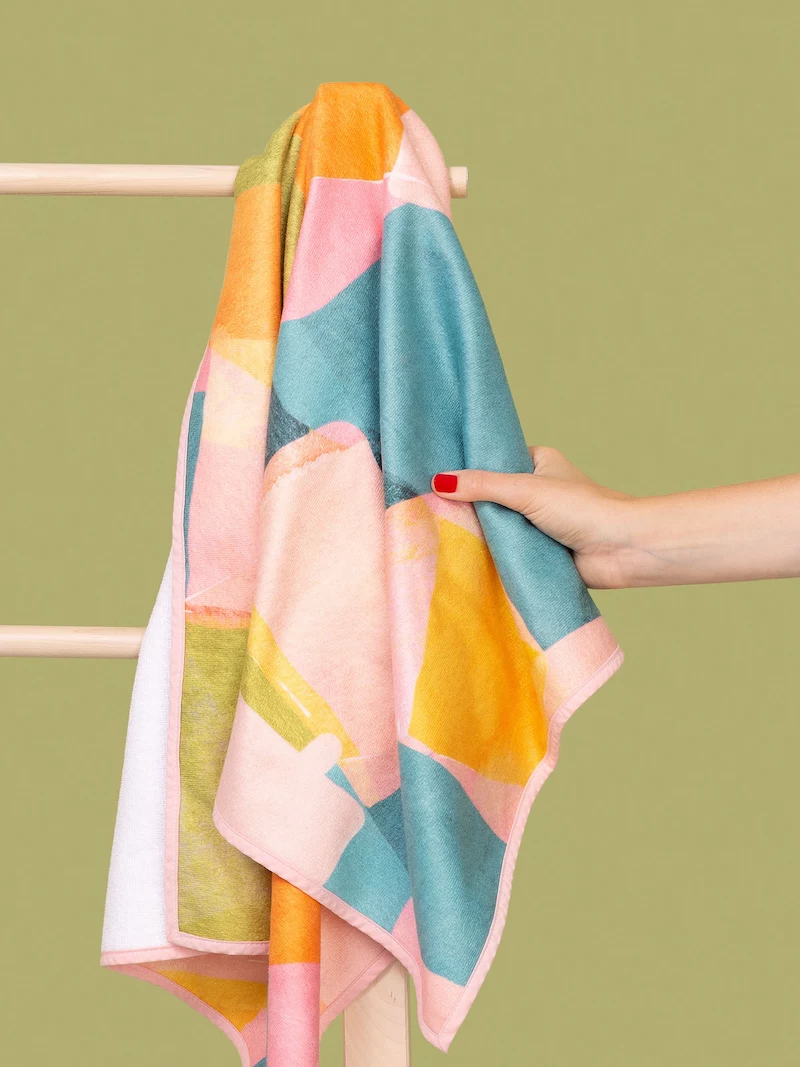
When you’re shopping for new ones, look for 100% cotton and a GSM over 500 for a great bath towel. And my final, most important tip: always wash new towels two or three times before you use them. Manufacturers put a silicone finish on them to make them feel extra soft in the store, but that finish repels water. A few washes will strip it off and unlock the towel’s true absorbency, starting its life off on the right foot.
Inspirational Gallery
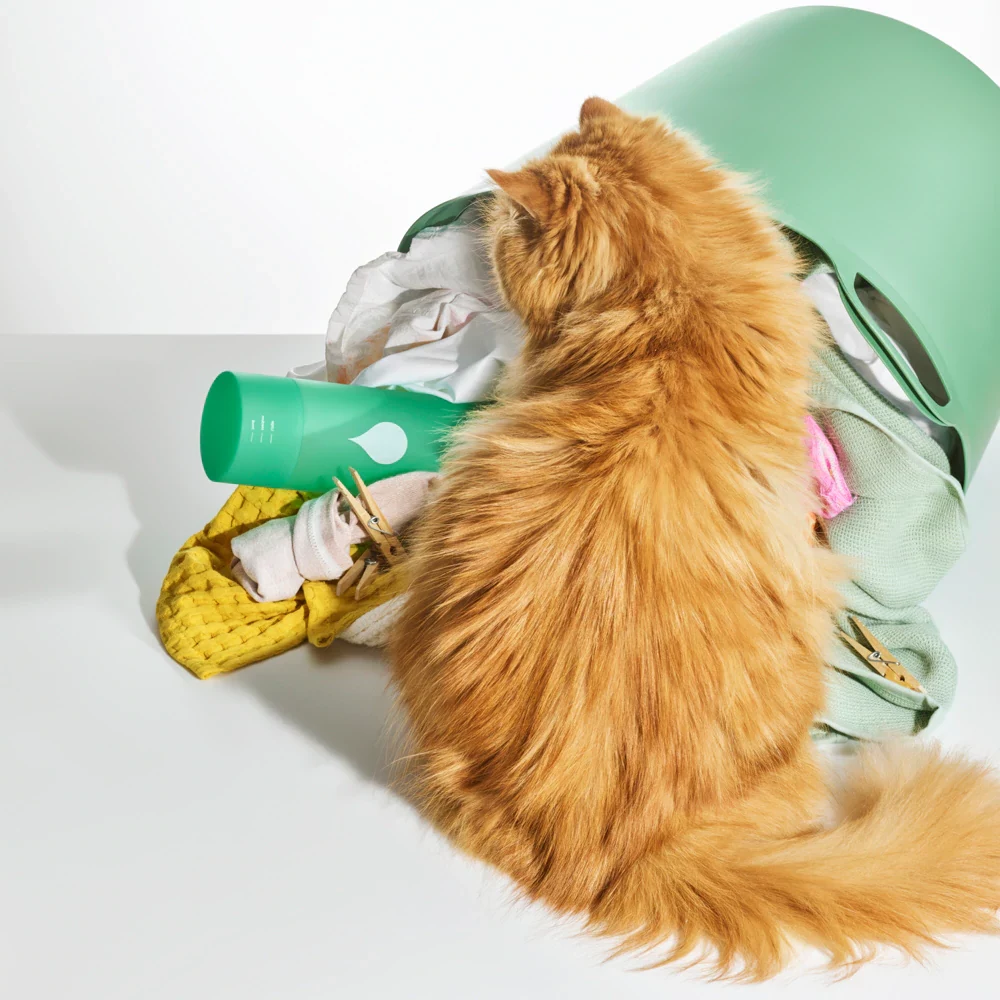
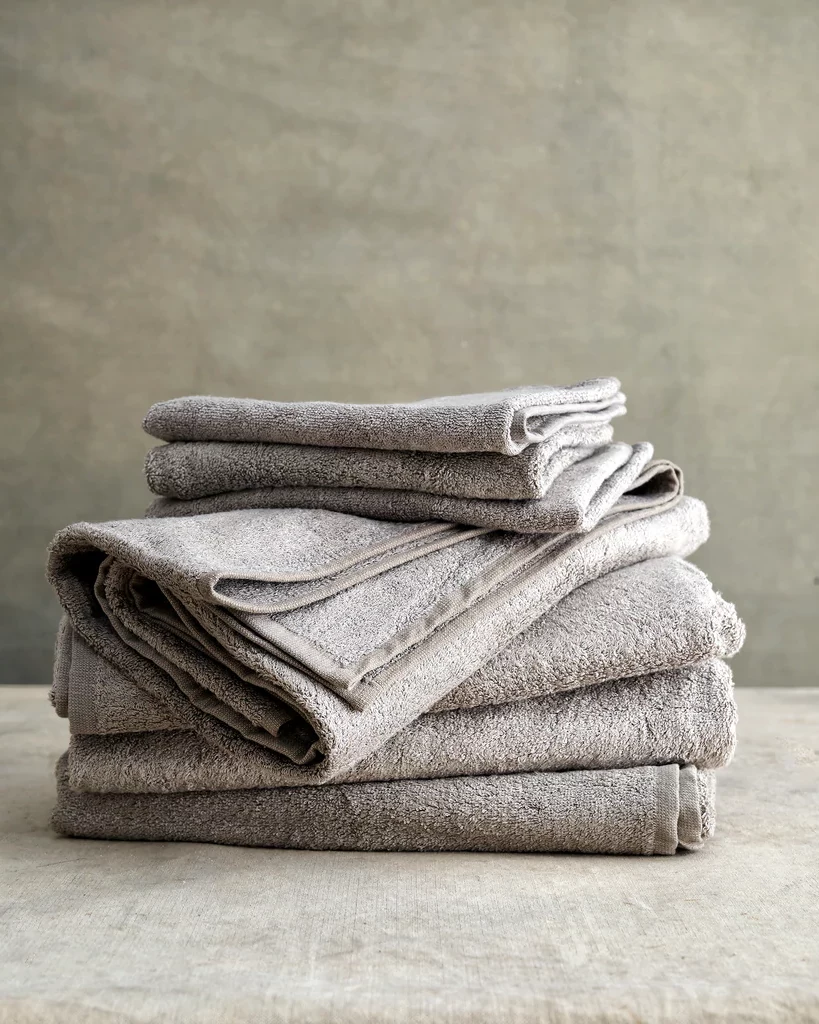
Love that fresh laundry scent but hate what fabric softener does to your towels?
The secret is in the drying, not the washing. Instead of chemical softeners that coat fibers, toss three or four wool dryer balls into the dryer with your towels. They reduce static and drying time while physically fluffing the terry loops. For a subtle, spa-like fragrance, add 2-3 drops of eucalyptus or lavender essential oil directly onto each ball before starting the cycle. Your towels will come out soft, absorbent, and smelling naturally clean.
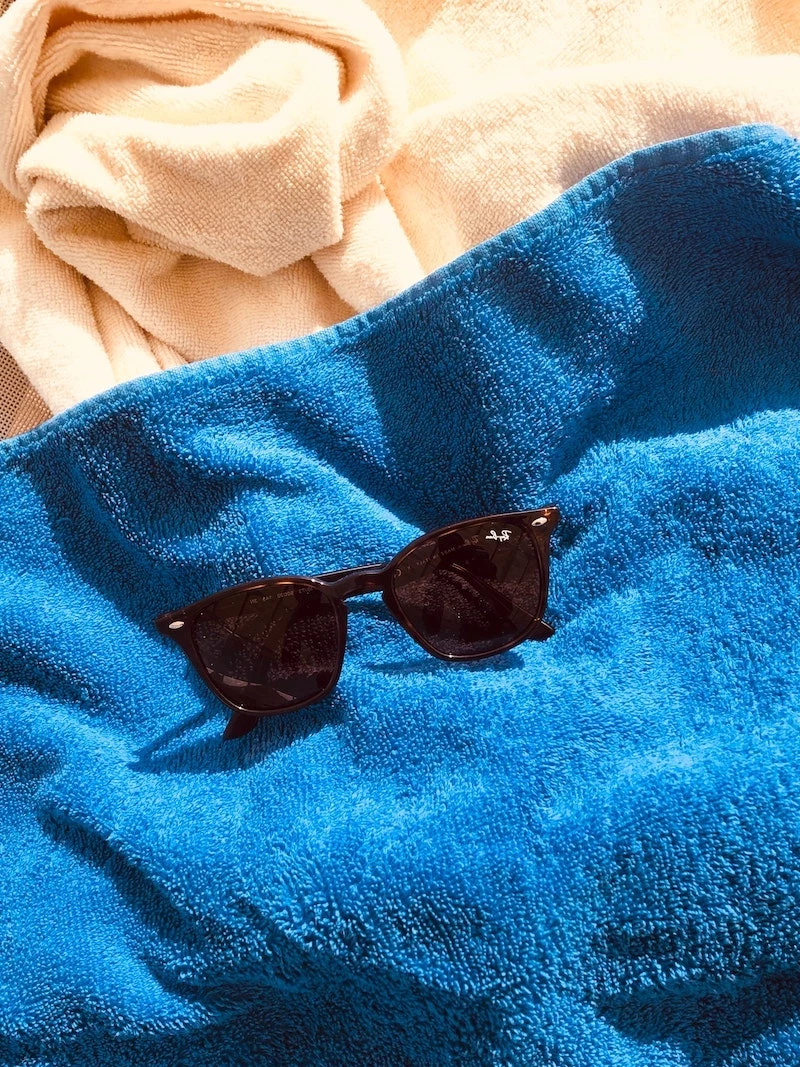
A study by the University of Arizona found that nearly 90% of bathroom towels were contaminated with coliform bacteria.
This unsettling fact highlights why towel absorbency is so crucial. When towels are stiff from detergent residue, they don’t dry properly, creating a damp environment where bacteria thrive. Following a proper washing routine not only restores softness but is also a key step in ensuring your towels are hygienically clean for your family’s use.
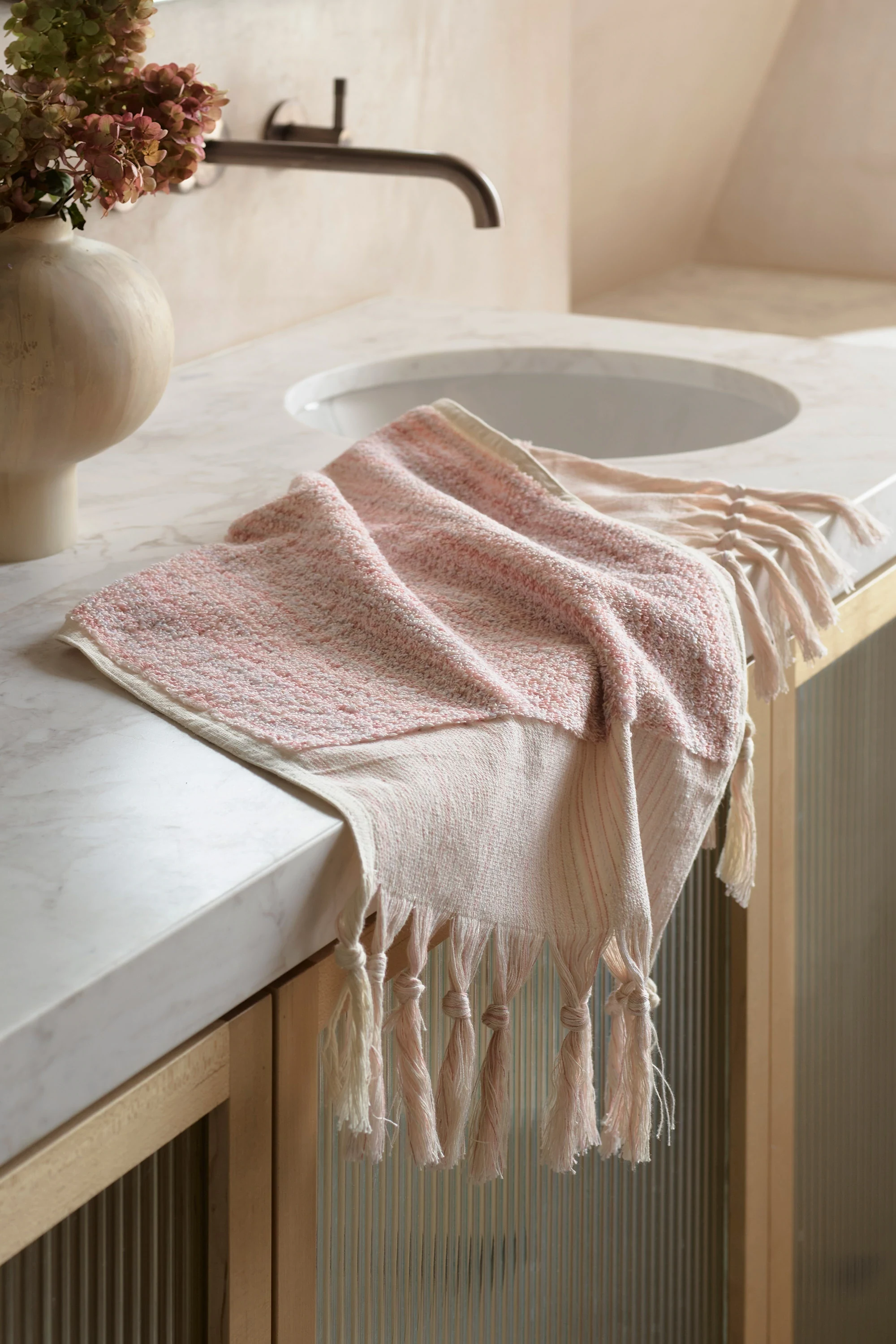
The Great Debate: Egyptian vs. Turkish Cotton
Egyptian Cotton: Known for its extra-long fibers, it creates an incredibly plush, soft, and highly absorbent towel. It’s the peak of luxury, perfect for a spa-like feel at home, but can be heavy and take longer to dry. Think brands like Parachute or Brooklinen for that premium experience.
Turkish Cotton: Also has long fibers, but they create a towel that is lighter, dries much faster, and actually becomes softer and more absorbent with successive washings. Ideal for everyday family use or humid climates.
The number one mistake in drying: Overcooking your towels. Blasting them on high heat until they are bone-dry seems logical, but it actually damages the cotton fibers, making them brittle and scratchy over time. The intense heat essentially “bakes” the stiffness in. For consistently soft results, tumble dry on a medium heat setting and pull them out when they are about 95% dry, letting them air-finish for the last few minutes.










